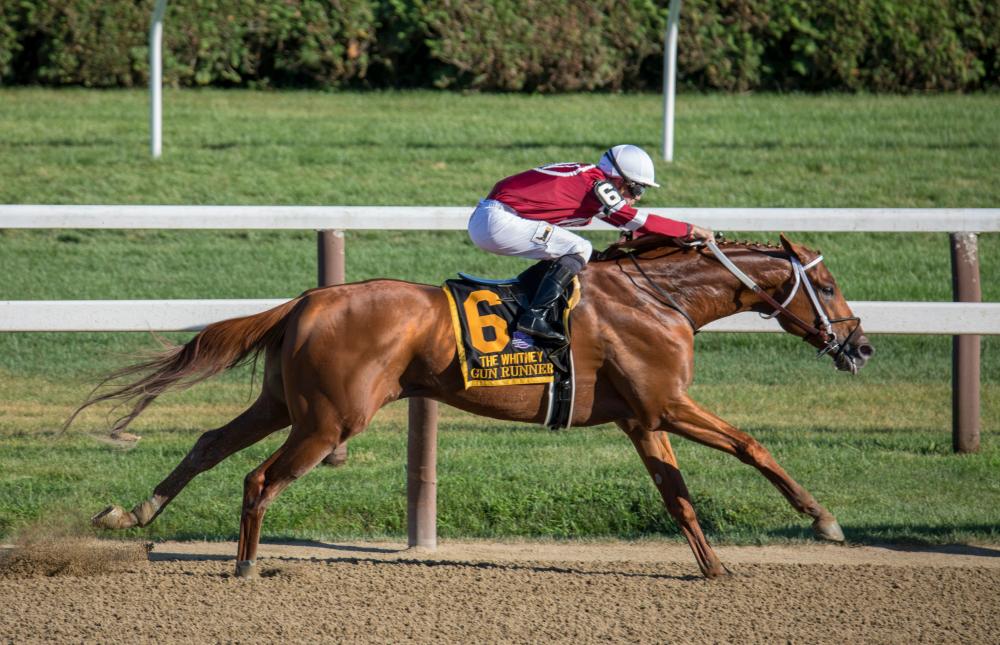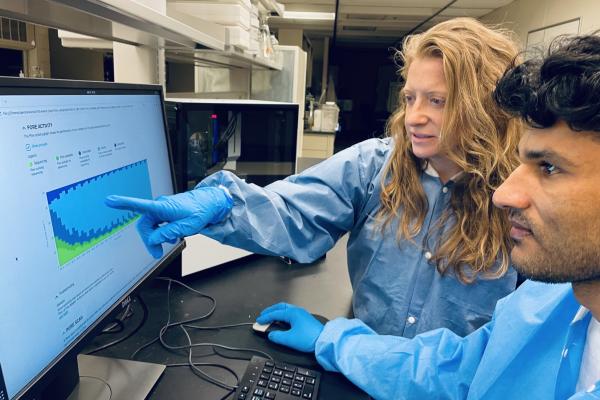New research into Thoroughbred bone fractures aims at avoiding catastrophe on the racetrack
February 26, 2024

Photo by Keith Luke on Unsplash
Dr. Sian Durward-Akhurst from the University of Minnesota College of Veterinary Medicine partnered with researchers from the Royal Veterinary College on a recently published study that examined genetic risk for bone fractures among Thoroughbred racehorses. Bone fractures are a leading cause of euthanasia in Thoroughbred racehorses. Because of the horses’ weight and speed, the force put on their legs—which are already vulnerable given their relative lack of muscle—is intense. This makes them uniquely prone to fractures. Coupled with the high risk for complications and the near-impossibility of immobilizing a healing leg, euthanasia is usually considered the most humane option after such a catastrophic injury.
Research has demonstrated the influence of environmental factors such as racing surface, exercise history, and horseshoe characteristics, resulting in recommendations that have decreased the number of racetrack deaths. However, the risk of fatal fracture has also been shown to be influenced by genetic factors. But these genetic factors are challenging to isolate and study because of the large variation in exposure to environmental factors.
In order to overcome this challenge and identify the genetic factors that might make some horses more prone to fractures, the researchers led by Dr. Debbie Guest at the Royal Veterinary College created a cell model they could study in the laboratory using skin cells from male Thoroughbreds—a technique that has been commonly used in the study of human disease, but not in horses. The Thoroughbreds were at varying levels of risk for fracture, as determined by a broad genetic assessment called a genome-wide polygenic risk score. The laboratory study of these cells allowed them to hone in on the genetic factors related to fracture without the complications of environmental influences.
In particular, the study identified certain genes like COL3A1 and STAT1 that showed different activity levels in cells from horses with high and low genetic risk of fractures. They also found a new genetic variant near COL3A1, which might influence the risk of fractures. Interestingly, this variation could affect how a specific gene (SOX11) works, and the researchers found that this gene might be involved in regulating bone health.
This is where Durward-Akhurst came in. “We used a catalog of genetic variation that I started to develop during my PhD, and which graduate student Jillian Marlowe has been working on,” she described. They determined the frequencies of the variants identified as being associated with fracture risk in this catalog of genetic variation.
While further research is needed, understanding these factors could eventually help in finding ways to reduce the risk of fractures in these magnificent animals, providing new ways to ensure their well-being. “Development of a polygenic risk model for fracture risk can help identify high risk horses. These horses can then be monitored more closely to reduce the chances that they develop a catastrophic fracture,” describes Durward-Akhurst. “Reducing the frequency of Thoroughbred racehorse fatalities is one of our major goals.”
Read the full study in Animals.


